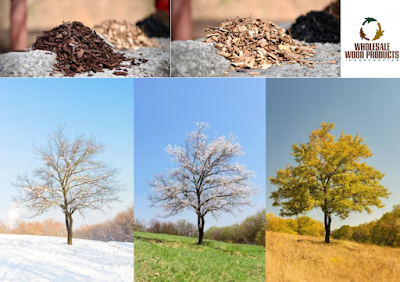Tips for Using Mulch in Commercial Landscaping
As a landscaping material, mulch is one of the most versatile and widely used products in the industry. Mulch can help to improve soil quality, conserve water, suppress weeds, and enhance the visual appeal of outdoor spaces. However, it's important to use mulch properly to ensure the best results. In this article, we'll share some tips for using mulch in commercial landscaping to help you get the most out of this valuable resource.
 |
| Tips for Using Mulch in Commercial Landscaping |
And if you're looking for high-quality mulch in the Tucker area, be sure to check out Wholesale Wood Products for a wide selection of products and expert advice.
1. Choose the right type of mulch
Before applying mulch, it's important to prepare the soil properly. This may include removing any weeds, tilling the soil, and adding any necessary amendments such as compost or fertilizer. By preparing the soil beforehand, you can help to ensure that the mulch will be more effective at retaining moisture and providing nutrients to the plants.
3. Apply mulch evenly
When applying mulch, it's important to apply it evenly to avoid creating "hot spots" or areas where the mulch is too thick. This can prevent water from reaching the roots of the plants and may also cause the mulch to become compacted over time. To apply mulch evenly, start by spreading a thin layer over the soil and then gradually build up the thickness as needed.
4. Don't mulch too close to plants
While mulch can provide many benefits to plants, it's important not to apply it too close to the stems or trunks of trees and shrubs. This can cause the bark to rot and may also create a habitat for pests and diseases. To avoid these problems, keep mulch several inches away from the base of plants, creating a small gap around the stems or trunks.
5. Reapply mulch as needed
Over time, mulch will break down and decompose, reducing its effectiveness. To maintain the benefits of mulch, it's important to reapply it periodically. This may be necessary every one to two years, depending on the type of mulch and the conditions of the site. When reapplying mulch, make sure to remove any old mulch first to avoid creating a thick layer that can smother plants.
In conclusion, mulch can be a valuable resource for commercial landscaping, providing a range of benefits to plants and the environment. By choosing the right type of mulch, preparing the soil properly, applying it evenly, keeping it away from plant stems, and reapplying it as needed, you can get the most out of this versatile landscaping material.


.png)
Comments
Post a Comment